Key Points Summary
Global entertainment giant Sony Group is entering the Web3 market through the Ethereum Layer 2 network "Soneium." With its vast IP library and global user base, it is expected to lead the mainstreaming of Web3.
Astar Network, as a core partner of Soneium, will leverage its years of mainnet operation experience to assist in ecosystem development. The ASTR token will become the core asset of Soneium, and both parties expect to generate strong synergies.
Soneium attracted over 170 projects within two weeks of its launch, with cases like Yay! and the entertainment platform Yoake demonstrating the potential for blockchain to seamlessly integrate into daily life, providing a model for large-scale Web3 applications.
1. Sony Group Begins a New Chapter

Source: Tiger Research
In January 2025, Sony Group launched the Ethereum Layer 2 blockchain network Soneium through its subsidiary Sony Blockchain Solutions Lab (Sony BSL), officially entering the Web3 space. This move has garnered significant attention in the industry as it continues Sony's tradition of innovation at the intersection of technology and culture.
For large enterprises, building a public chain is extremely rare, primarily due to the three major challenges of Web3: regulatory uncertainty, unproven business models, and high infrastructure costs. Global giants especially need to weigh compliance risks.
Sony chose to face these challenges head-on, stemming from its ingrained "innovator spirit." From the painful transition from analog to digital, Sony has gained valuable experience, forming a strategic mindset of "actively creating new growth engines." This mindset is now being applied in the Web3 domain.
Astar Network has become an ideal partner for Sony Group's Web3 strategy. Since 2019, Astar has accumulated technical capabilities and operational experience within the Polkadot ecosystem, which will accelerate the realization of Sony's Web3 vision. Notably, the ASTR token will become the core asset of Soneium, and both parties will jointly promote the mainstreaming of Web3 through deep integration of technology and ecosystems.
This report will analyze how Soneium and Astar Network are reshaping the Web3 industry landscape, exploring the synergistic potential between Sony Group and Astar Network and their driving force for Web3 adoption.
2. Soneium: Moving Towards the Mainstream
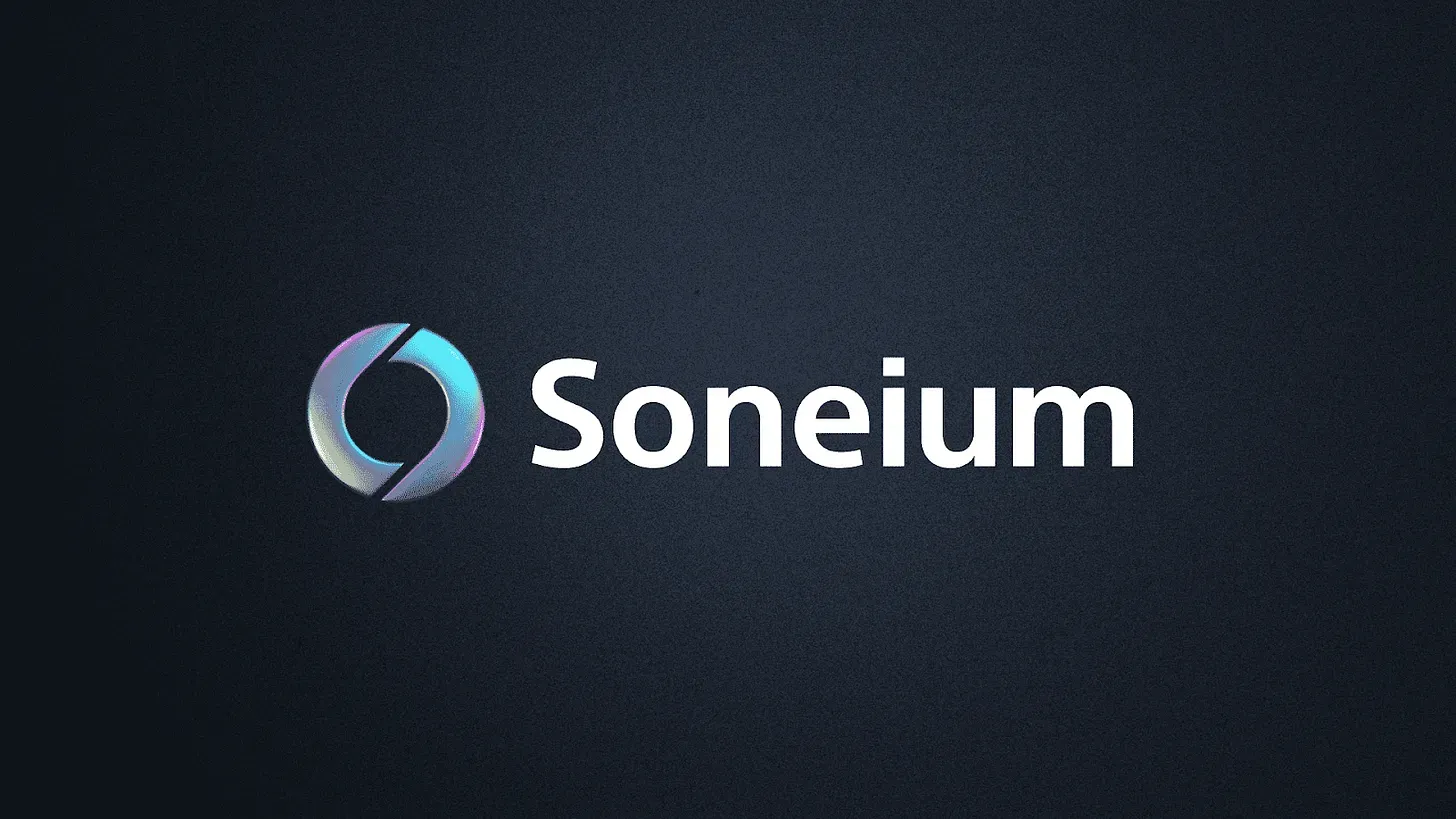
Source: Soneium
Soneium is an Ethereum Layer 2 mainnet built on the OP Stack, co-created by Sony Group and Startale through a joint venture, Sony BSL. Startale contributed blockchain experience accumulated from operating Astar Network since 2019, while Sony injected global user and IP resources. This combination gives Soneium the potential to accelerate the mainstreaming of Web3.
2.1 Soneium: A Core Strategic Pillar for Sony Group
Soneium is not just a blockchain project; it is an extension of Sony Group's digital strategy and may become a link connecting its diverse businesses. Given Sony's leadership in the entertainment industry, this integration could have a profound impact on the adoption of Web3. Understanding Sony Group's strategic vision is key to assessing its potential.
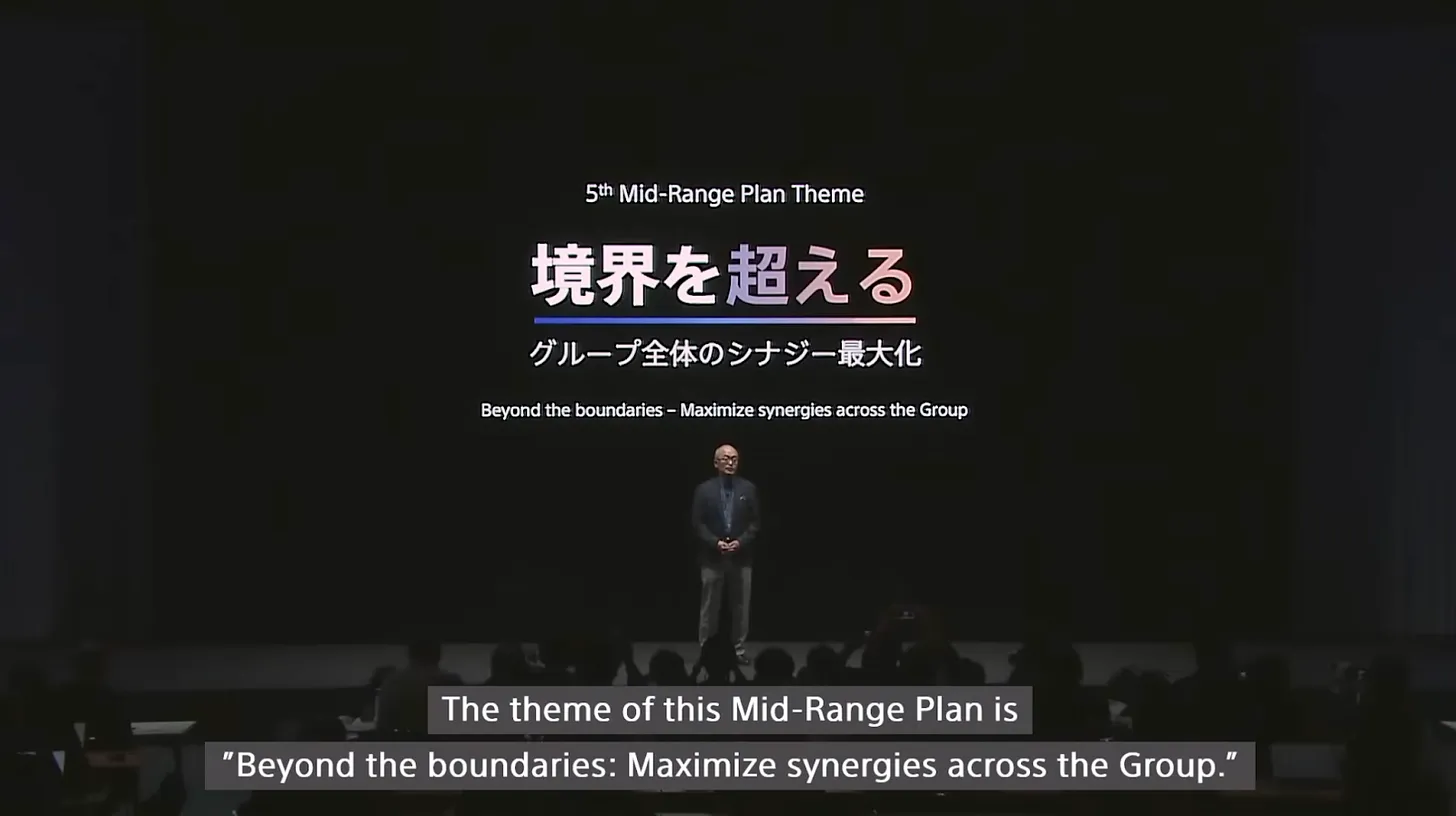
2024 Sony Group Corporate Strategy Meeting, Source: Sony Group
In the "2025-2027 Strategic Plan" announced by Sony Group in 2024, the vision of "transcending boundaries to maximize group synergies" was proposed, emphasizing cross-departmental collaboration to accelerate digital innovation and explore new revenue sources.
The blockchain network of Soneium may become the digital ecological cornerstone for integrating Sony Group's assets. The following analysis explores the potential for business integration from both short-term and long-term perspectives.
2.1.1 Short-term Perspective: Strengthening Existing Web3 Business Integration
Sony Group's initial integration of Soneium will be based on its existing Web3 businesses: the NFT platform SNFT launched in 2022 and the cryptocurrency exchange S.BLOX, renamed after acquiring WhaleFin in 2023.
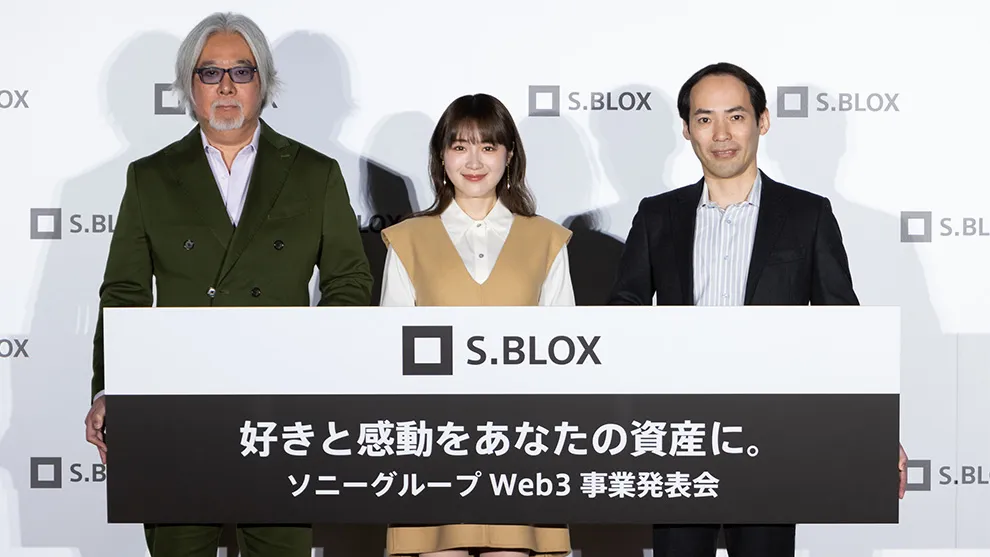
2025 Sony Group Web3 Business Launch Event, Source: Sony
S.BLOX may become a key entry point into the Soneium ecosystem, serving as a bridge between traditional assets and Web3 assets. By integrating exchange-wallet functions similar to Backpack, S.BLOX can provide a more secure asset management experience than existing Web3 wallets.
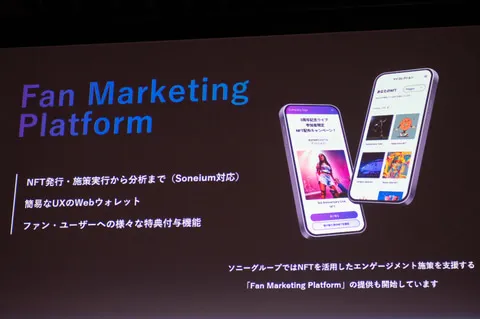
Source: Sony
Several subsidiaries of Sony Group are expanding Web3 projects through SNFT-Soneium:
Sony Pictures Entertainment (Japan): Offers exclusive content access to users who purchase designated content on Amazon Prime Video;
Sony Music Entertainment France: Releases limited edition NFTs to commemorate the second anniversary of the music and Web3 community "Sunny B. 1991";
Sony Music Publishing (Japan): Launches NFT activities linked to the concert of the girl group "SANDAL TELEPHONE."
These projects aim to enhance fan interaction and digital content distribution through NFTs, exploring new ways to connect with audiences.
2.1.2 Long-term Perspective: Deep Integration of Entertainment and Financial Industries
Although Sony Group has not disclosed specific plans for Soneium beyond the mentioned projects, its long-term potential is worth noting.
The entertainment business accounts for 60% of Sony Group's revenue, and it controls the entire chain of content production and distribution. While this concentration brings risks, Web3 technology may open new growth paths.
Early signs indicate innovative potential: Sony Interactive Entertainment's blockchain patents (especially for in-game NFTs) suggest that the PlayStation ecosystem may integrate with Web3, such as NFT game assets and cryptocurrency payment features.

Source: Sony Music
Sony Music and Sony Pictures could activate a vast array of IP through Web3 technology. Sony Music has tested NFTs based on artist IP and is exploring Web3 applications for music copyrights. With a combination of music, anime, and gaming content, Sony may open new revenue sources through Web3.
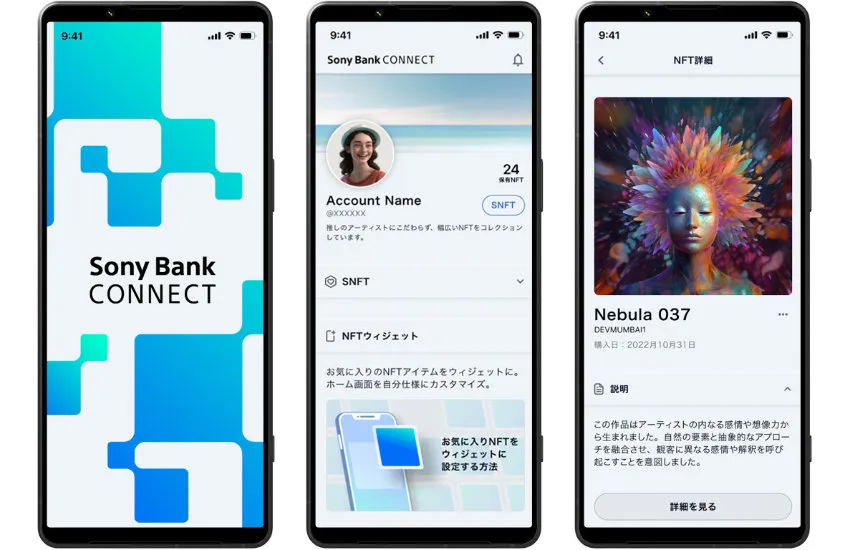
Source: Sony Bank
Sony Financial Group, although spun off, still maintains close cooperation with Sony Group.
Sony Bank is a pioneer in blockchain applications in the banking industry: launching a user-friendly NFT management application CONNECT in collaboration with SNFT; piloting a stablecoin project; becoming the first bank in Japan to offer loan asset-backed security tokens (STO).
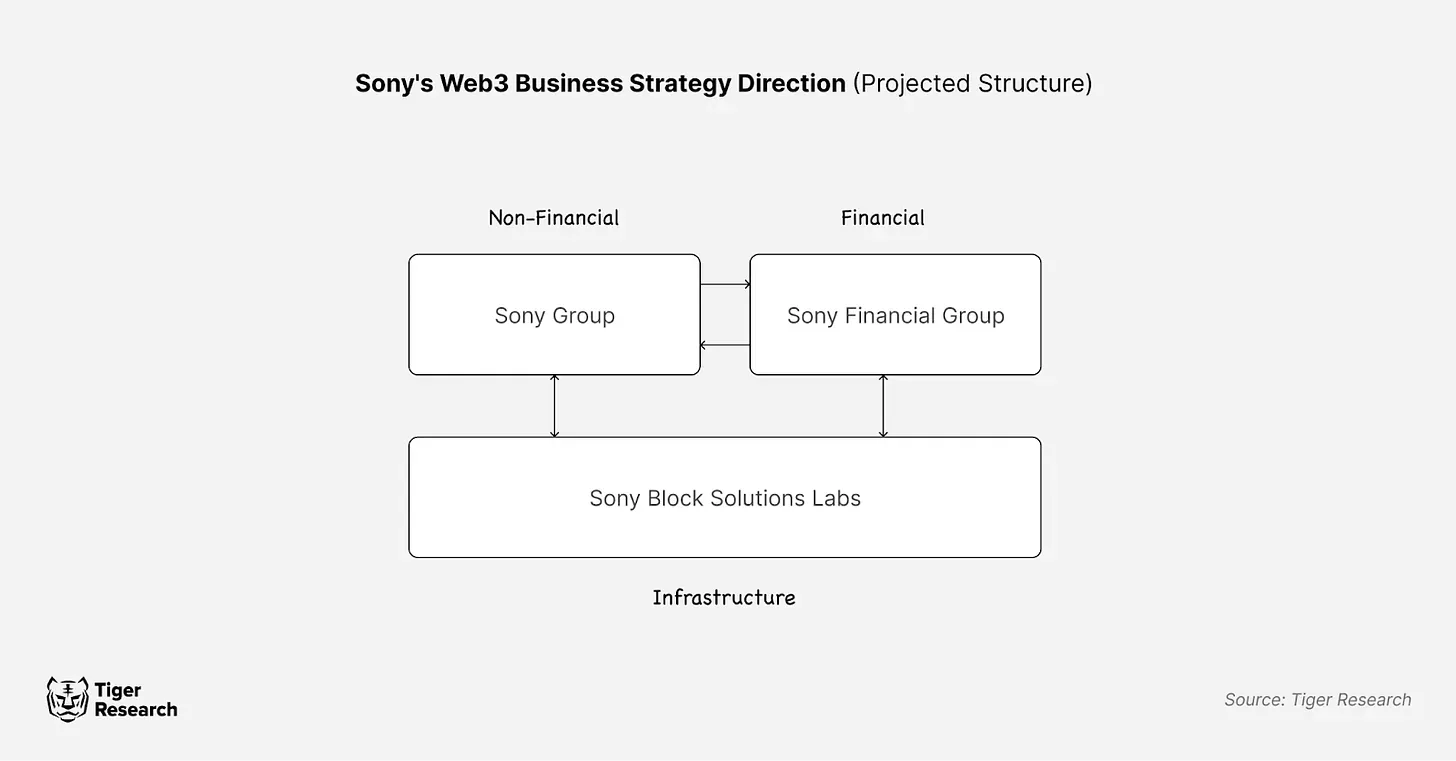
Soneium may connect Sony's businesses through new digital services. For example: PlayStation users could use stablecoins developed by Sony Financial Group for payments; fans could buy and sell tokenized entertainment IP assets. These applications will integrate Web3 technology into everyday services, supporting Sony Group's strategic goals.
2.2 Key Cases in the Soneium Ecosystem
Soneium is committed to building an inclusive Web3 ecosystem that goes beyond Sony Group, focusing on user-friendly application scenarios. Users can access blockchain services through familiar applications without needing to understand the underlying technology. This strategy has already shown results—attracting over 170 projects within two weeks of launch, with consumer applications making up the highest proportion. The following analyzes representative applications within the Soneium ecosystem.
2.2.1 Yay!: Connecting the Web2 Community with SocialFi, Infusing Daily Life with Reward Mechanisms

Source: Yay!
Yay! is a popular community platform in Japan, with over 10 million users and more than 100,000 active communities since its launch in 2020. The platform demonstrates how Web3 can enhance the value of social media without changing the user experience: members earn rewards for their contributions to the community, with all blockchain interactions automatically handled by the platform's backend.
On Yay!, users earn EMPL tokens through community contributions, which can be used to purchase items within the platform, give gifts, or be exchanged for YAY tokens that can be withdrawn as cash. This mechanism allows users to enjoy the benefits of a token economy without dealing with complex crypto transactions.

Source: Yay!
Yay! serves both Web2 and Web3 users: traditional users earn points and spend them within the app; crypto users can put their assets on-chain to participate in staking, providing liquidity, and other DeFi activities.
Its appeal to Web3 users has already manifested—staking activities linked to Ethereum and ASTR attracted $20 million in participation. By creating value for both user types, Yay! successfully bridges Web2 and Web3.
2.2.2 Yoake: Innovating Fan Culture with Blockchain
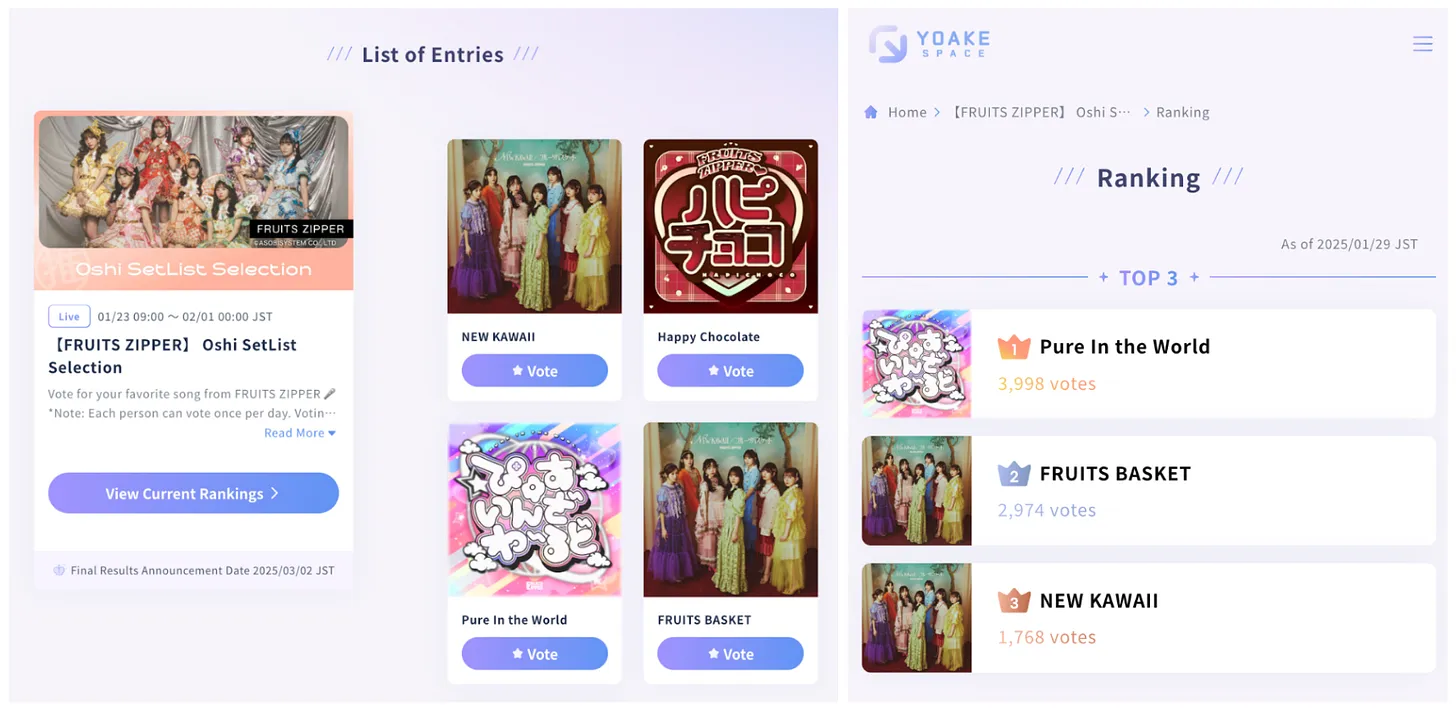
Source: Yoake Space
Yoake is an entertainment fan blockchain platform co-developed by renowned Japanese producer Yasushi Akimoto and Startale. Akimoto previously created the idol group AKB48, which pioneered the fan voting mechanism, and this innovation has earned Yoake an entertainment award in the Soneium Spark incubation program.
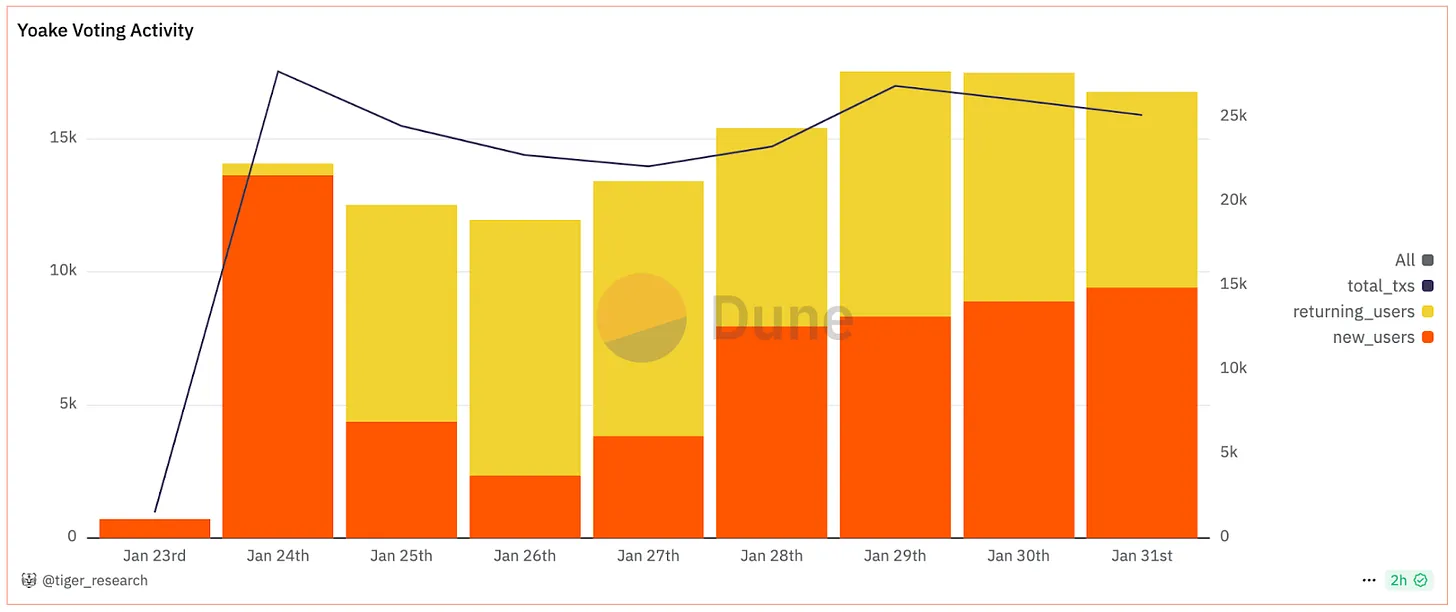
Source: Dune, Tiger Research
Yoake uses blockchain to address common pain points in fan communities: voting manipulation and opaque royalty distribution. The platform records all voting on the Soneium chain, creating a verifiable transparent system. Fans can vote using their social media accounts (no crypto wallet required), and the blockchain records are automatically handled by the platform. This system supports various activities, from selecting performance tracks for idol groups to voting in fashion competitions.
Yoake embodies Soneium's blockchain adoption logic: solving problems takes precedence over showcasing technology. As Sony BSL director Satoshi Watanabe stated, this is a "market pull" strategy—first identifying demand and then using technology to solve it, rather than building a solution and then looking for a scenario (technology push). Yoake practices this principle by enhancing fairness and transparency in fan communities, with blockchain serving merely as an underlying solution.
Yoake will launch the YOAKE token on Soneium to reward active fans and measure community engagement. This model may become a template for the blockchainization of traditional services in the entertainment industry.
3. Why Choose OP Stack? Solid Infrastructure and Scalability
Soneium is built on the Optimism OP Stack for Ethereum Layer 2, rather than developing a new chain from scratch. This choice stems from a clear understanding of the challenges of Layer 1 development: establishing network security and ecosystem requires significant resources and time. By leveraging Optimism's mature infrastructure, Soneium can focus on developing user-oriented services and driving adoption.
As an Ethereum Layer 2, Soneium inherits Ethereum's core advantages: EVM compatibility: supports existing Ethereum tools (such as wallets and smart contracts); security: provides reliable protection for Sony IP; developer ecosystem: connects to Ethereum's vast developer community.
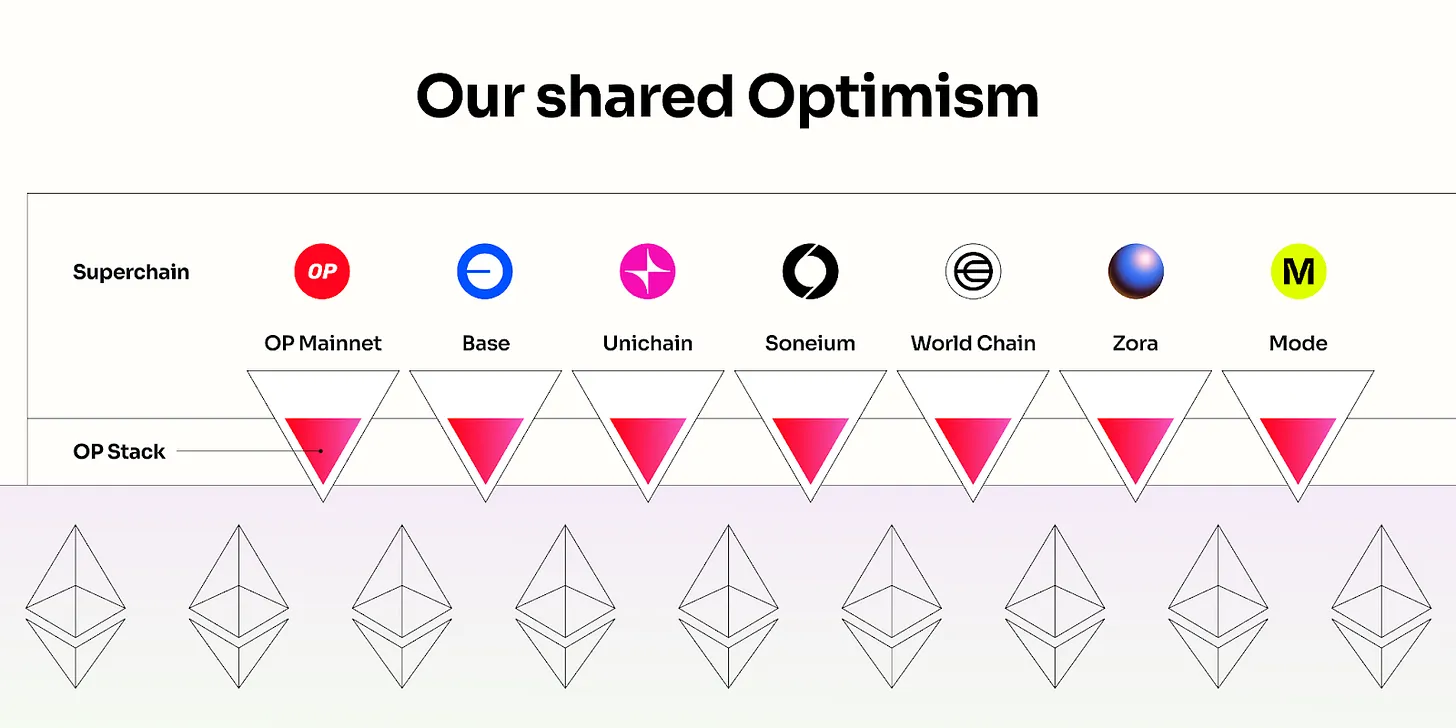
Source: Optimism
Soneium plans to join Optimism's "Superchain" network through OP Stack, interconnecting with OP Stack chains like Base, World Chain, and Unichain, expanding its capability boundaries. The proposed Optimism Interop Protocol will enhance direct communication between chains (without going through the Ethereum mainnet).
By relying on Ethereum's security and OP Stack's scalability technology, Soneium lays the foundation for rapid growth. This pragmatic approach reflects its goal: to accelerate Web3 adoption using existing solutions rather than reinventing the wheel.
4. A Shared Vision, Dual Network Synergy: The Symphony of Soneium and Astar
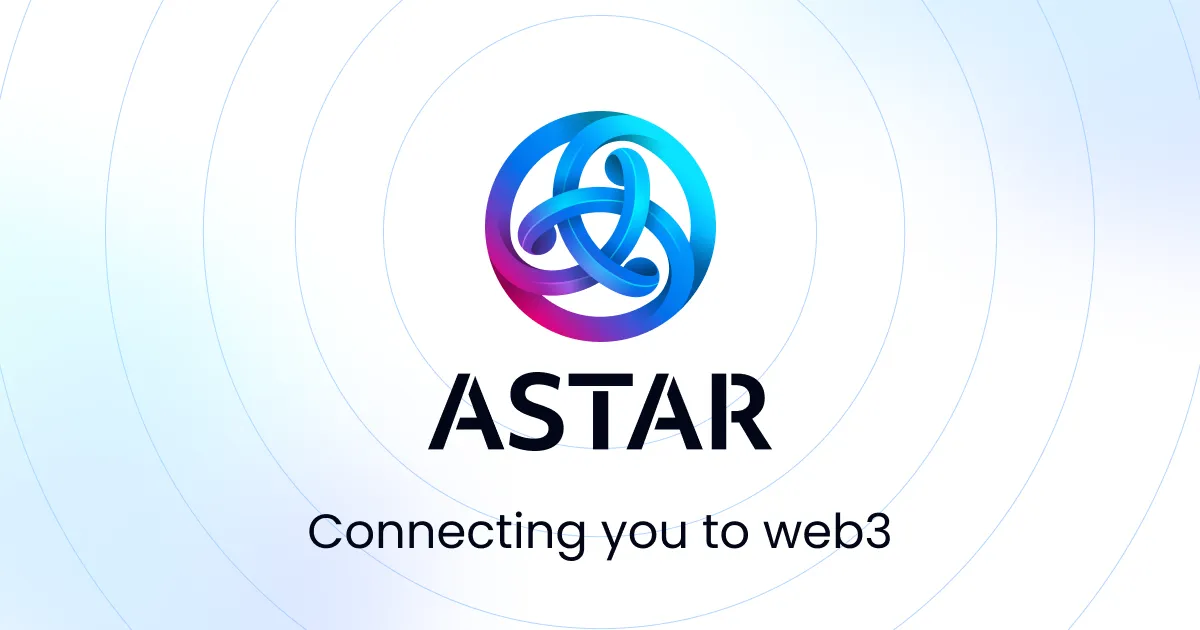
Source: Astar Network
Astar Network, operated by Startale, is expected to collaborate deeply with Soneium. Although Astar is based on Polkadot and Soneium on Ethereum, the differences between the two may create complementary advantages and maximize synergies.
Analyzing Astar Network's strengths helps assess Soneium's potential, especially the possibilities of dual network collaboration.
4.1 Ecological Integration: Co-building a Mainstream Collective Ecosystem
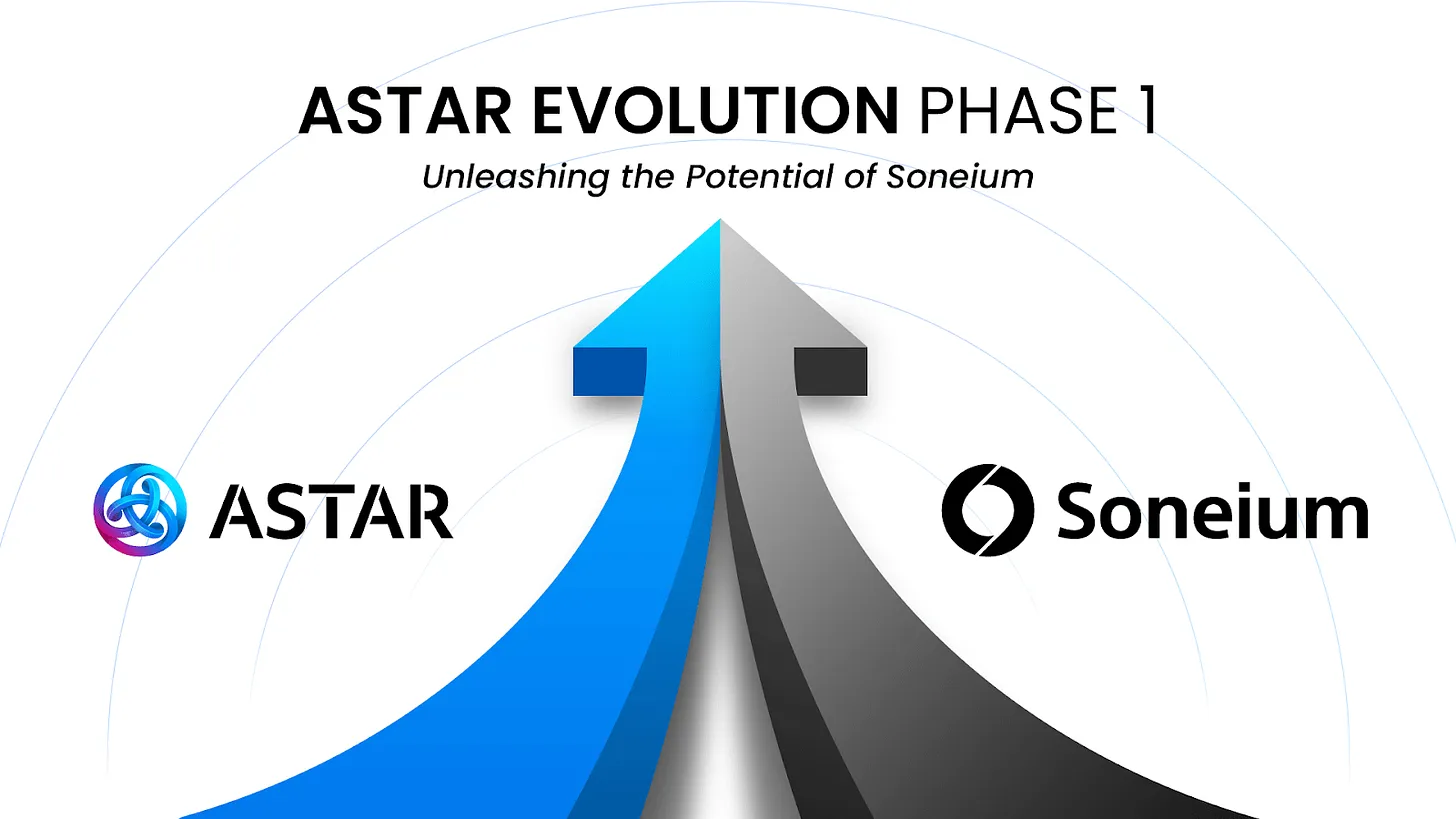
Source: Astar Network
While Astar Network and Soneium operate independently, they can develop complementary capabilities: Astar provides liquidity and ecological resources for Soneium's early growth; Soneium, as an OP Stack Layer 2, helps Astar expand from the Polkadot ecosystem to the Ethereum ecosystem.
Astar's dual support for WebAssembly (WASM) and Ethereum Virtual Machine (EVM) enables it to connect the Polkadot and Ethereum ecosystems. Collaborating with Soneium may accelerate this cross-chain expansion.
Astar's ecosystem management experience can provide references for Soneium: effectively managing ecological liquidity through large-scale token burns and dApp staking V3, offering better incentives for users and dApp projects; despite setting a 7% base inflation cap, maintaining token levels through continuous improvements; launching on-chain governance in December 2024, transitioning to community-led decision-making, and fostering active discussions on ecological development.
Astar and Soneium share a vision that transcends technical integration: bringing Web3 to mainstream users. Astar's "Evolution Phase 1.5" will officially connect the dual networks, forming a shared ecosystem. Seamless communication between chains will be achieved through Chainlink's CCIP and LayerZero technology, building a more sustainable and scalable Web3 ecosystem.
4.2 ASTR: A Strategic Pivot for Dual Network Symbiosis
4.2.1 Establishing an Initial Foundation with ASTR Token
Soneium utilizes Astar Network's ASTR token to launch its ecosystem, addressing the common cold start challenges of new networks.
ASTR has been listed on major exchanges such as Binance, OKX, and Upbit, providing Soneium with ready liquidity. Using a mature token (rather than issuing a new one) allows Soneium to build its ecosystem more efficiently than networks like BASE that require separate launches, while also reducing compliance complexity and attracting existing crypto users.
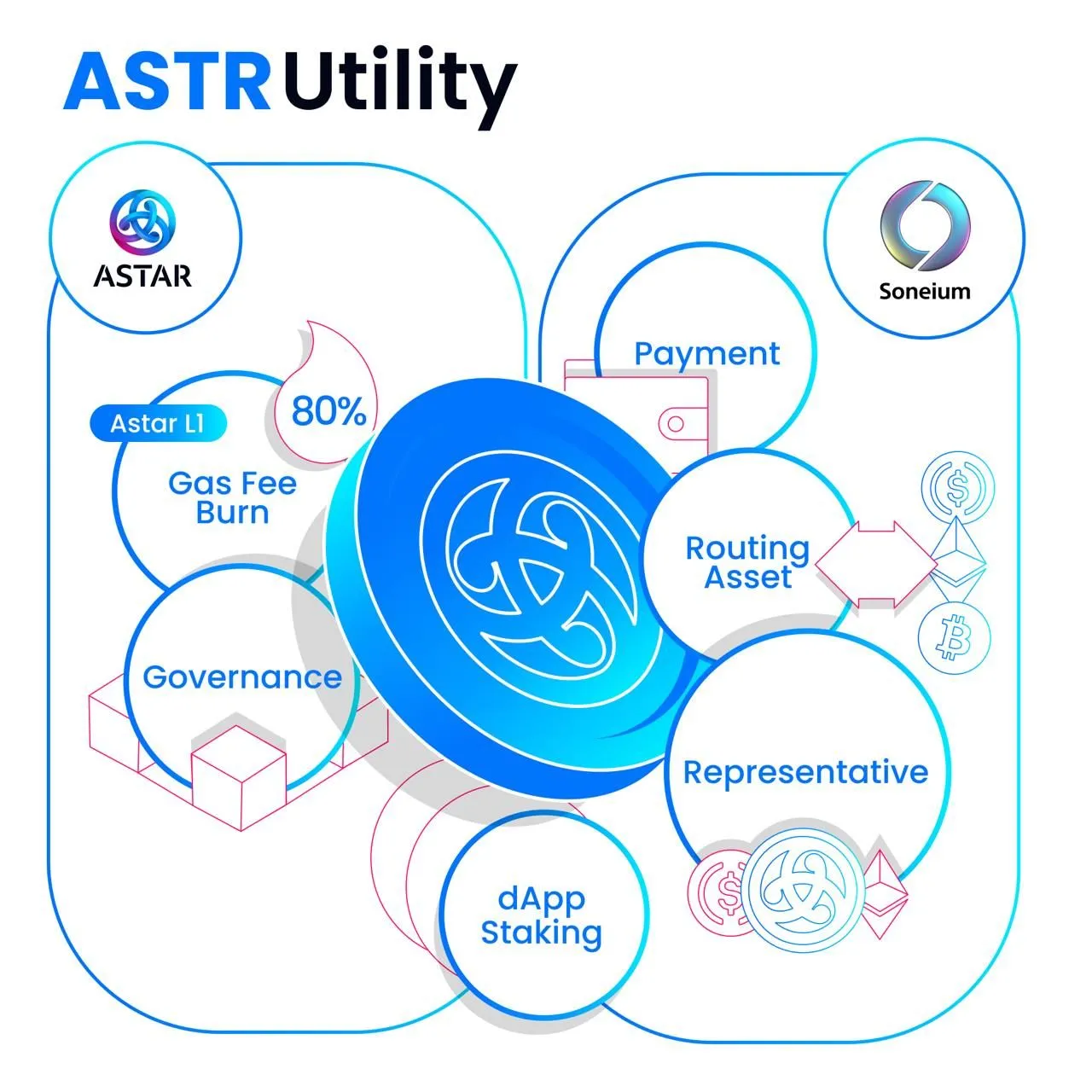
Source: Astar Network
ASTR is the core asset of the Soneium ecosystem, with plans to add several key functions: facilitating DeFi transactions, enabling payments in consumer applications, and supporting stablecoin issuance. This core role allows ASTR to capture the ecosystem value of Soneium, which may directly benefit Astar Network. As of February 1, ASTR accounted for 57% of Soneium's total locked value (TVS), highlighting its importance.
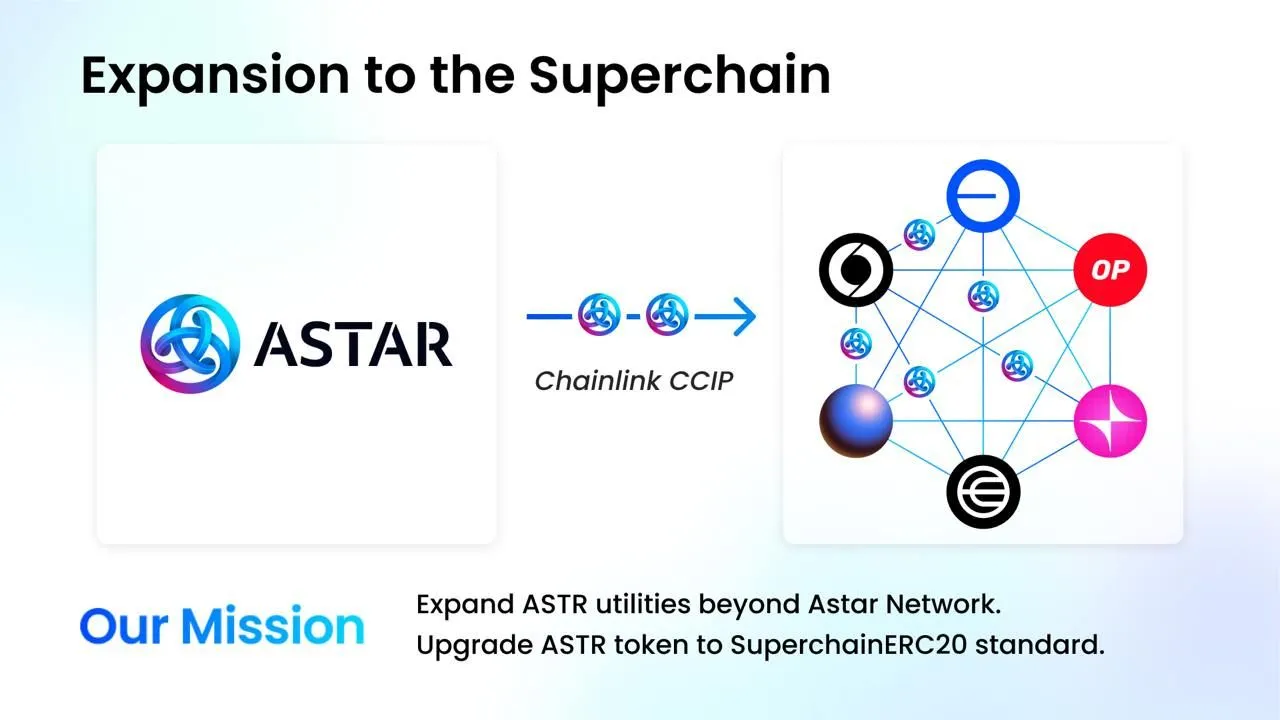
Source: Astar Network
Astar plans to leverage ASTR's core position in Soneium to extend its influence to the Optimism Superchain. ASTR has adopted the Superchain asset standard (ERC-7802, SuperchainERC20), enabling seamless cross-chain transfers. This standardization may help ASTR become an important asset in the Superchain ecosystem, thereby acting as a bridge between Soneium and a broader ecosystem.
4.2.2 Astar and Soneium's Ecological Boosting Strategy
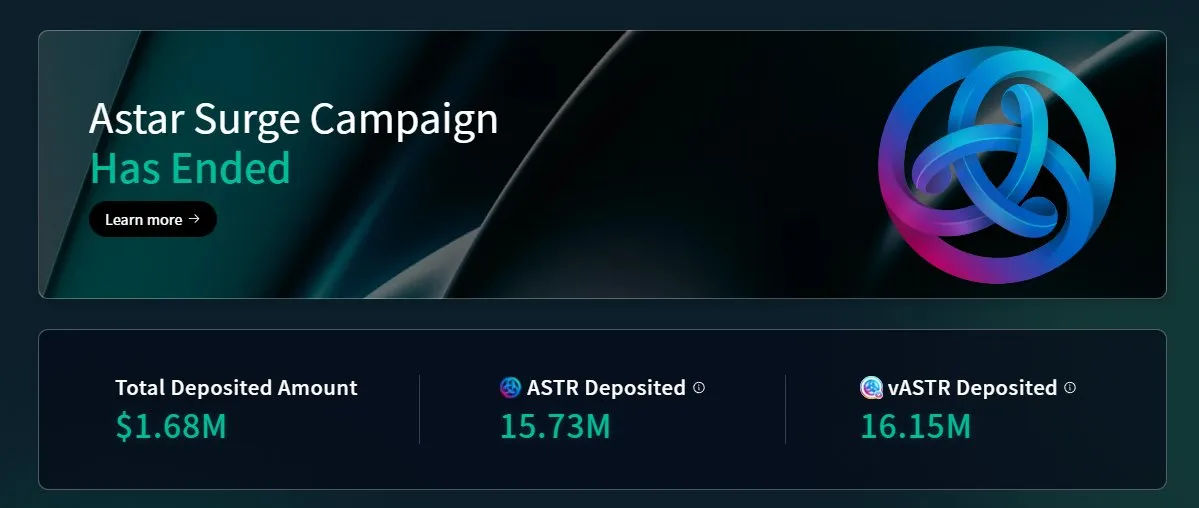
Source: Astar Network
Astar Network is conducting incentive activities in collaboration with Soneium to develop their shared ecosystem. Through the Astar Surge campaign, ASTR holders can earn rewards by depositing tokens into designated smart contracts, providing initial liquidity for Soneium's launch. This campaign has already injected $1.68 million in liquidity into key projects like Sake Finance and Yay!.
Astar Network also plans to launch the Astar Contribution Score (ACS) program, issuing 100 million ASTR tokens to reward users for their activities in Soneium's DeFi protocols, games, and consumer applications. The goal of ACS is not only to distribute tokens but also to encourage ongoing participation and development within the ecosystem.
Using funds from Astar Network to support the development of Soneium represents a strategic investment: it positions ASTR as a key cross-chain asset within the Superchain ecosystem while expanding its influence in the Ethereum ecosystem. As Sony Group develops mainstream Web3 applications, ASTR can gain real-world use cases, thereby driving adoption for both networks.
4.2.3 Rapid Finality Layer Based on Astar Network
As an OP Rollup Layer 2, Soneium faces dual time constraints: transactions require about 13 minutes to achieve hard confirmation on the OP Stack; L1 withdrawals necessitate a 7-day waiting period due to OP Rollup characteristics.
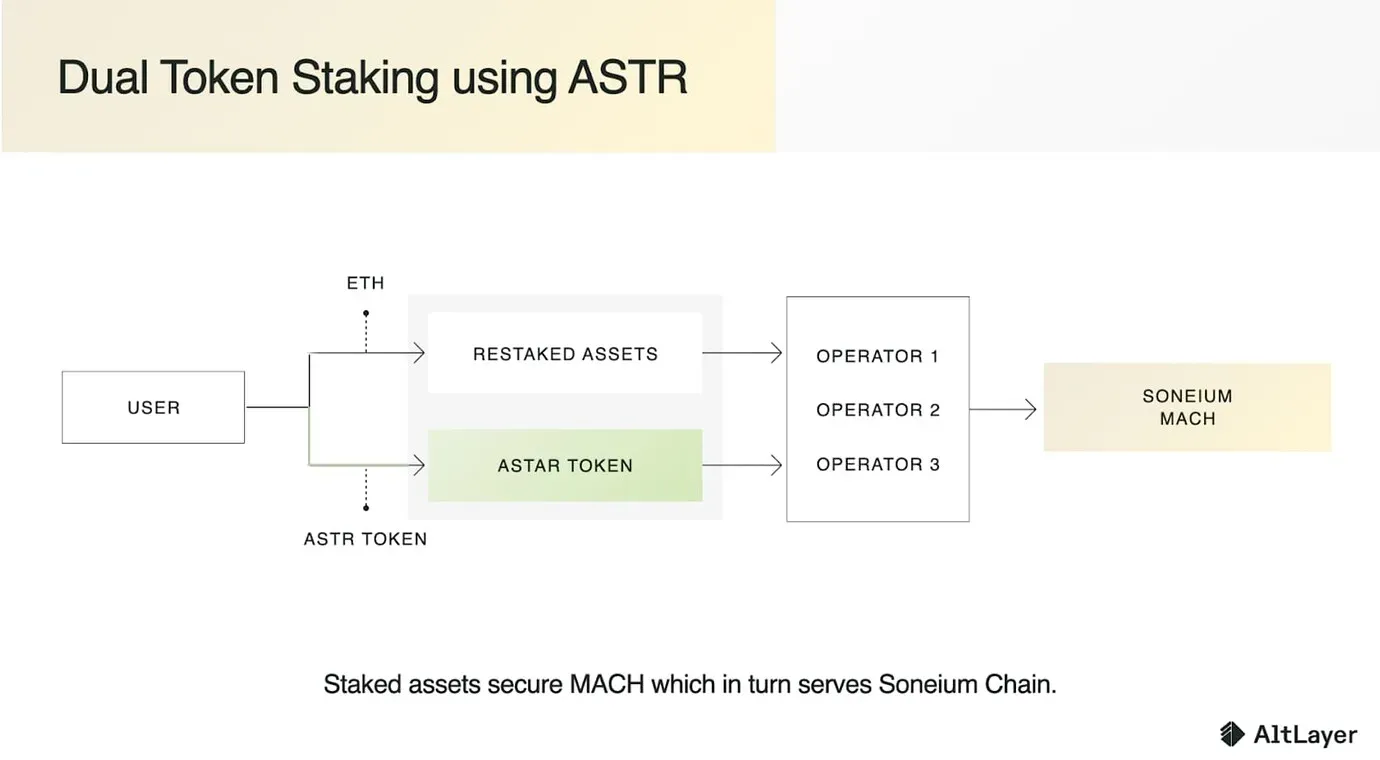
Source: AltLayer
Soneium will adopt AltLayer's MACH protocol to address latency issues. MACH is an Active Verification Service (AVS) that enhances security and cross-chain messaging using EigenLayer's restaking mechanism. This upgrade will benefit games and financial services that require rapid transactions.
The implementation of MACH will create new use cases for ASTR, making it a network contribution asset similar to restaked ETH. This provides token holders with more ways to participate and earn rewards. The expanded utility can enhance network liquidity and ecosystem engagement.
4.3. Integration of Technology and Vision: The Possibility of a New Unified Network
The partnership between Astar Network and Soneium will strengthen over time and develop based on their complementary technologies: Astar Network operates on Polkadot with dual EVM-WASM support, while Soneium runs as an Ethereum Layer 2. Together, they can expand into both the Ethereum and Polkadot ecosystems.
The recent Klaytn-Finschia merger demonstrates how two blockchain networks can unite, providing a potential model for Soneium and Astar Network. While closer integration could connect the Ethereum and Polkadot ecosystems, such development requires careful long-term planning. These networks are realizing this potential through their current collaboration, leveraging their unique strengths.
5. Challenges for Soneium: Balancing IP Protection and Network Oversight
Intellectual property infringement has long been a challenge for Web3, as evidenced by recent controversies: NEIRO faces ownership disputes, while CHILLGUY has been criticized for unauthorized use of intellectual property. These incidents undermine investor confidence and damage the industry's reputation.
Soneium introduces the concept of a "sandbox" to balance openness and protection while building a creator-centric fan community ecosystem. The mass adoption of Web3 technology requires both the creative freedom of creators and the fundamental assurance of intellectual property protection.
Soneium adopts a phased security approach: during a warning period, it reviews suspicious contracts and projects, adding them to a restricted list if necessary. The system does not completely block access but allows transactions through Ethereum Layer 1. As Vitalik Buterin described, this acts like a "huge speed bump"—preventing malicious activities while maintaining network accessibility. Once issues are resolved, projects can regain full access.
This approach strikes a balance between protecting creators' rights and the core values of openness and innovation in Web3. By implementing managed oversight rather than strict censorship, Soneium aims to combine intellectual property protection with blockchain decentralization—potentially a model for mainstream Web3 adoption.
6. Conclusion
The launch of Soneium not only represents another blockchain platform but also signifies a major company's commitment to extending Web3 beyond the current reach of less than 7% of the global population. For Sony, this initiative is not just a technical experiment but aims to address the fundamental challenges of mainstream adoption.
This timing mirrors Sony's past transformations. While Sony revolutionized personal music with the Walkman, it initially struggled to adapt to digital technology. Later, the company achieved success by combining entertainment with technology—Web3 can now extend this strategy into a new era.
Soneium transcends typical blockchain initiatives by combining Sony Group's hardware expertise with Startale's blockchain experience. The collaboration between this established company and Startale balances corporate resources with the agility of startups, aiming to create a more practical Web3 ecosystem.
Japan provides a strategic advantage for Soneium: relatively supportive policies for the cryptocurrency and Web3 industries, along with an environment that encourages global corporate collaboration. These factors provide a stable foundation for Soneium's development and international growth.
However, Sony's Web3 business faces significant obstacles in technology, regulation, and user experience. The key to success lies in how effectively Sony can transform these challenges into innovative opportunities.
免责声明:本文章仅代表作者个人观点,不代表本平台的立场和观点。本文章仅供信息分享,不构成对任何人的任何投资建议。用户与作者之间的任何争议,与本平台无关。如网页中刊载的文章或图片涉及侵权,请提供相关的权利证明和身份证明发送邮件到support@aicoin.com,本平台相关工作人员将会进行核查。




